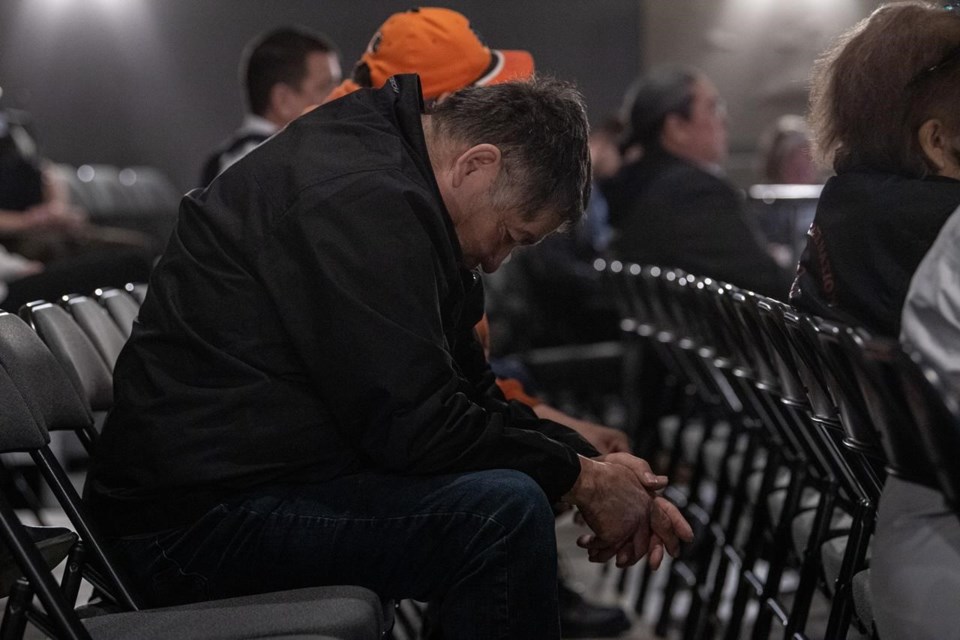RCMP may never fully learn why Myles Sanderson went on a deadly stabbing rampage on a Saskatchewan First Nation, but they may be able to offer answers that some experts say could help victims’ families make sense of it all.
Mounties released on Thursday a preliminary timeline of the Sept. 4 attacks on the James Smith Cree Nation and in the nearby village of Weldon, which killed 11 people and injured 17. They also announced they are conducting a psychological autopsy on Sanderson, who went into medical distress and died after he was taken into custody.
The psychological autopsy could help investigators understand why people were attacked and others not, Supt. Joshua Graham told a news conference.
Staff in the RCMP's behavioural sciences branch have met with community members and Sanderson’s family as part of the process, Graham said, and a report is expected in several months.
Experts in the field say a psychological autopsy could provide answers into Sanderson's thinking and whether substance use played a role.
It may also undo confusion in the community.
“It is quite possible and likely that we cannot get all the reasons, but I’m sure that we will get some and we will get more,” said Antoon Leenaars, a clinical and forensic psychologist in Windsor, Ont., who has written about psychological autopsies.
“For the survivors, if they’re given proper feedback, it can be very helpful and healing.”
Leenaars said a psychological autopsy normally involves extensive interviews with family, friends and those who knew the person. Documents, emails and records that may shed light on who the person was and what they were about are also examined.
Dr. Scott Theriault, a forensic psychiatrist and associate professor at Dalhousie University in Halifax, said a psychological autopsy aims to “reconstruct the state of mind of the person” at the time of a crime.
Theriault conducted a psychological autopsy on Lionel Desmond, a former soldier from Nova Scotia who shot and killedthree family members before killing himself in 2017.
Theriault determined that Desmond was aware of what he did and would have been criminally responsible.
“You need to build up an image of who this person was or what he or she was like,” Theriault said. “Because you can't talk to the individual directly, you need a lot of collateral information.”
Leenaars said psychological autopsies can identify risks for communities and help prevent other tragedies.
“If we don't understand, we can't really change things,” he said.
Some of the new information RCMP released this week offers some hints, said Theriault.
Mounties said Myles Sanderson and his brother Damien Sanderson were together a few days before the attack, selling cocaine and getting into fights.
Damien Sanderson told a friend at a bar the night before the mass killing that the brothers had a “mission” and “people would hear all about it in the next few hours."
RCMP said a witness also said the brothers were drinking heavily and “pumping themselves up for something” before the attacks.
Myles Sanderson first killed his brother before stabbing the others in various homes and locations, police said.
“From what I’ve seen, there’s some hints dropped about some disturbance in the mental state of the individual before this all happened,” Theriault said.
“But to what degree that will lead to sort of any clear conclusions about why it happened the way that it did and when it did, I don't know.”
A parole document from February 2022 showed Myles Sanderson had a two-decade-long criminal record and propensity for violence when intoxicated.
He told the board that regular drug use and drinking hard alcohol would make him “lose (his) mind” and get angry.
Mounties said it’s not known what motivated the attacks, and they may never know.
“We want to ensure (families) feel supported, informed and that they are able to continue processing and healing while awaiting answers to their questions,” said Assistant Commissioner Rhonda Blackmore, commanding officer of the Saskatchewan RCMP.
Two coroner's inquests into the killings and into Sanderson's death in custody are scheduled for next year. Blackmore said an independent officer review will also be publicly released.
“Everyone impacted by what happened at James Smith Cree Nation and in Weldon deserve answers.”
Psychological autopsies have been called into question.
During the inquiry into Nova Scotia’s 2020 mass shooting that left 22 dead, two researchers said the psychological autopsy of killer Gabriel Wortman lacked fundamental information and that the practice doesn’t provide “sound means” of generating predictions or preventive strategies.
The researchers said the psychological autopsy did not clearly define its purpose and contained bias, as beliefs were delivered as fact.
However, Leenaars said psychological autopsies can be effective, as long as they’re done properly. Researchers need to speak to lots of people, get as much information as possible and not jump to conclusions.
“Psychological autopsies are difficult, but they have a long history,” he said. “You have to be good at it and you have to be comprehensive.”
This report by The Canadian Press was first published April 29, 2023.
Jeremy Simes, The Canadian Press



